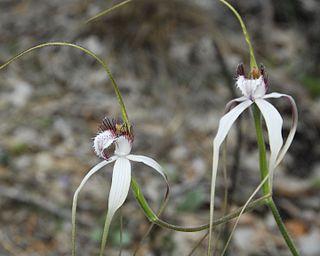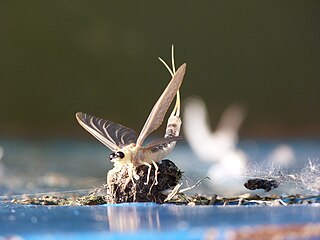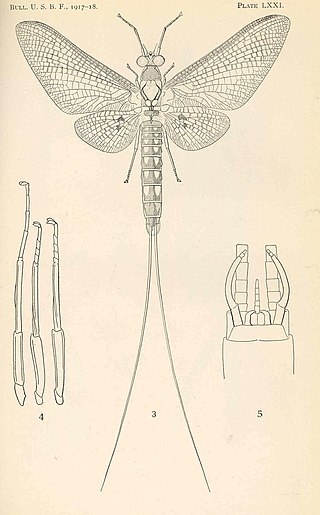
Hamsters are rodents belonging to the subfamily Cricetinae, which contains 19 species classified in seven genera. They have become established as popular small pets. The best-known species of hamster is the golden or Syrian hamster, which is the type most commonly kept as a pet. Other hamster species commonly kept as pets are the three species of dwarf hamster, Campbell's dwarf hamster, the winter white dwarf hamster and the Roborovski hamster.

Prairie dogs are herbivorous burrowing ground squirrels native to the grasslands of North America. There are five recognized species of prairie dog: black-tailed, white-tailed, Gunnison's, Utah, and Mexican prairie dogs. In Mexico, prairie dogs are found primarily in the northern states, which lie at the southern end of the Great Plains: northeastern Sonora, north and northeastern Chihuahua, northern Coahuila, northern Nuevo León, and northern Tamaulipas. In the United States, they range primarily to the west of the Mississippi River, though they have also been introduced in a few eastern locales. They are also found in the Canadian Prairies. Despite the name, they are not actually canines; prairie dogs, along with the marmots, chipmunks, and several other basal genera belong to the ground squirrels, part of the larger squirrel family (Sciuridae).

The Tisza, Tysa or Tisa, is one of the major rivers of Central and Eastern Europe. It was once called "the most Hungarian river" because it used to flow entirely within the Kingdom of Hungary. Today, it crosses several national borders.

The river kingfishers or pygmy kingfishers, subfamily Alcedininae, are one of the three subfamilies of kingfishers. The river kingfishers are widespread through Africa and east and south Asia as far as Australia, with one species, the common kingfisher also appearing in Europe and northern Asia. This group includes many kingfishers that actually dive for fish. The origin of the subfamily is thought to have been in Asia.

The black-footed ferret, also known as the American polecat or prairie dog hunter, is a species of mustelid native to central North America.

Mayflies are aquatic insects belonging to the order Ephemeroptera. This order is part of an ancient group of insects termed the Palaeoptera, which also contains dragonflies and damselflies. Over 3,000 species of mayfly are known worldwide, grouped into over 400 genera in 42 families.

The European mink, also known as the Russian mink and Eurasian mink, is a semiaquatic species of mustelid native to Europe.

Novi Bečej is a town and municipality located in the Central Banat District of the autonomous province of Vojvodina, Serbia. The town has a population of 13,133, while Novi Bečej municipality has 23,925 inhabitants.

The European ground squirrel, also known as the European souslik, is a species from the squirrel family, Sciuridae. It is among the few European species in the genus Spermophilus. Like all squirrels, it is a member of the rodent order. It is to be found in eastern and central Europe from southern Ukraine, to Asia Minor, Austria, the Czech Republic, Slovakia, Serbia, Greece, Romania, Bulgaria, North Macedonia and north as far as Poland but the range is divided in two parts by the Carpathian Mountains.

The boodie, also known as the burrowing bettong or Lesueur's rat-kangaroo, is a small, furry, rat-like mammal native to Australia. Once common throughout the continent, it is now restricted to a few coastal islands. A member of the rat-kangaroo family (Potoroidae), it lives in burrows and is active at night when it forages for fungi, roots, and other plant matter. It is about the size of a rabbit and, like most marsupials, carries its young in a pouch.

The Neuse River waterdog is a medium-sized waterdog, family Proteidae, found in two rivers of North Carolina.

The Zasavica is a bog in the region of Mačva, west central Serbia. It is a major wildlife refuge and one of the last authentically preserved wetlands in Serbia. In the 2000s it became a popular attraction with the successful reintroduction of beavers, which had become extinct on the same land areas 100 years before.

The short-tailed chinchilla is a small rodent part of the Chinchillidae family and is classified as an endangered species by the IUCN. Originating in South America, the chinchilla is part of the genus Chinchilla, which is separated into two species: the long-tailed chinchilla and the short-tailed chinchilla. Although the short-tailed chinchilla used to be found in Chile, Argentina, Peru, and Bolivia, the geographical distribution of the species has since shifted. Today, the species remains extant in the Andes mountains of northern Chile, but small populations have been found in southern Bolivia.

The red fox is the largest of the true foxes and one of the most widely distributed members of the order Carnivora, being present across the entire Northern Hemisphere including most of North America, Europe and Asia, plus parts of North Africa. It is listed as least concern on the IUCN Red List. Its range has increased alongside human expansion, having been introduced to Australia, where it is considered harmful to native mammals and bird populations. Due to its presence in Australia, it is included on the list of the "world's 100 worst invasive species".

Caladenia longicauda is a species of plant in the orchid family Orchidaceae and is endemic to the south-west of Western Australia. It is distinguished by its large leaf and by its up to five large, white flowers which have drooping sepals and petals with long, thickish brown "tails".

Palingenia longicauda is an aquatic insect in the order Ephemeroptera. It is known as the Tisa or Tisza mayfly after the European Tisza river where it is found and also as the long-tailed mayfly and giant mayfly since it is the largest mayfly species in Europe, measuring 12 cm (4.7 in) from head to tail.

Tiszavirág híd is a pedestrian and cyclist bridge in Szolnok, Hungary on the Tisza river.

Coxoplectoptera or "chimera wings" is an extinct order of stem-group mayflies containing one family, Mickoleitiidae.
Dolania is a monotypic genus of mayfly in the family Behningiidae containing the single species Dolania americana, also known as the American sand-burrowing mayfly. It is found in the southeastern United States, as far south as Florida, and is generally uncommon. The adult insects emerge before dawn in early summer, mate and die within the space of about thirty minutes. The female deposits her eggs in the water and dies within five minutes of emergence. This is believed to be the shortest adult lifespan of any insect.

Hexagenia bilineata is a species of mayfly in the family Ephemeridae. It is native to North America where it is found in the Upper Mississippi Valley. Sometimes adults of this mayfly are so abundant as to cause a nuisance because of their enormous numbers. The larvae are aquatic and burrow in mud and the adult insects have brief lives.


















